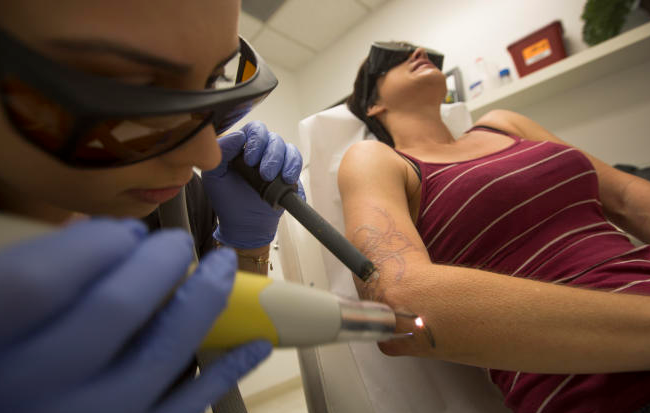Researchers analyzed nearly 100 currently used tattoo inks and found that many contained chemicals that were not declared on ingredient lists and whose nanoparticle size was considered harmful.
The principal investigator of the new study is John Swierk from Binghamton University.

"The idea for this project originally came from my interest in what happens when lasers remove tattoos," says John Swierk. "But then I realized that not much is known about the ingredients in tattoo ink, so we started analyzing popular ink brands."
According to the FDA, tattoos are considered cosmetic in the United States. That said, tattoo ink doesn't need to be FDA-approved, and there aren't any regulations requiring manufacturers to list the ingredients in tattoo ink.
When Swierk and colleagues started investigating, they quickly discovered that most tattoo artists had no idea what was in the ink they were using. They also found that many of the companies that make tattoo inks also make paints and pigments used in textiles. So, are the chemicals used in tattoo pigments the same as those used in commercial paint?
Using techniques such as nuclear magnetic resonance spectroscopy and Raman spectroscopy, researchers are starting to understand what's actually in these tattoo inks. The preliminary phase of the research looked at about 100 tattoo inks, and according to Swierk, almost every ink they saw was surprising.
Of the 56 different inks analyzed so far, 23 contained azo dyes, Swierk said.
Azo dyes are generally considered safe and are used in many commercial products from carpets to textiles. Some azo dyes are also used in food. However, ultraviolet light or bacteria can degrade these pigments into known carcinogenic molecules.
Further analysis of 16 inks showed that about half of the products contained nanoparticles smaller than 100 nanometers. A 2017 study found that tiny nanoparticles in tattoo ink show up in the body's lymph nodes, making it easier for the tiny particles to migrate to other parts of the body.
"It's a worrisome size range," Swierk added. "Particles of this size can pass through cell membranes and potentially cause harm."
Ultimately, this work is still in its early stages. The researchers created a website called What's in My Ink, which aims to catalog the contents of many commercially available tattoo inks. Only a handful of inks are listed on the website so far. However, as data from recent studies are peer-reviewed and published in journals, they will be added to this site.
Therefore, I am here to appeal to all tattoo artists to understand the ink you use.
The more you know, the more confident you can use it and the more your customers will trust you.
Thinking about the plan B solution will help your career develop more smoothly.
Just like tattoo beds and tattoo furniture, you must choose a brand with guaranteed quality to make your tattoo career smoother and better.
Choose TATARTIST, your best tattoo furniture brand.

